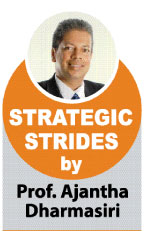Teams are in high demand. In the world of sport and business alike, this is the case. We often hear the news on the action and reaction of members of the same team paving the way to conflict. What is so special about a team? What derails team success? Today’s column will shed light in dealing with the magical factor in teams – synergy.
Overview
 Why should it be teams? Can’t people work as individuals and achieve results? Let’s take a situation. Imagine one’s house is on fire. The father does one thing in panic, and the mother does something totally different, also in panic. The son and daughter are thoroughly confused and are just running around. Obviously, the house cannot be salvaged. That must be a coordinated effort. That’s why teams are essential in facing turbulence.
Why should it be teams? Can’t people work as individuals and achieve results? Let’s take a situation. Imagine one’s house is on fire. The father does one thing in panic, and the mother does something totally different, also in panic. The son and daughter are thoroughly confused and are just running around. Obviously, the house cannot be salvaged. That must be a coordinated effort. That’s why teams are essential in facing turbulence.
Teams and groups are often interchangeably used to describe a set of people working together. In perusing through the literature of organisational behaviour, veterans such as Stephen Robbins and Fred Luthans have identified the ’Group’ as a set of two or more individuals interacting and interdependent to achieve a common objective. A team is one step ahead. I would simplify a team as being ‘a group with synergy’.
Synergy in focus
The term synergy comes from the Greek word synergia, meaning “working together”.
Stephen Covey, in his bestseller ‘Seven habits of highly effective people,’ describes synergy as follows:
“Synergy means that the whole is greater than the sum of its parts. It shows that the relationship, which the parts have to each other, is a part in and of itself. It is not only a part, but also the most catalytic, the most empowering, the most unifying and the most exciting part. “
He says that synergy is everywhere in nature. If two plants are placed close together for growth, the roots improve the quality of the soil so that both plants will grow better than if they were separated. In short, one plus one equals three or more.
The challenge is to apply the principles of creative co-operation, which we learn from nature, in our social interaction. The essence of synergy is to value differences – to respect them, to build on strengths and to compensate for weaknesses.
I have seen that most leading business organisations in Sri Lanka promote teamwork as a core value. It is easy to wear a t-shirt showing that one belongs to a particular team but is team work only confined to the t-shirt? The issue is how much emphasis is paid on the concept of synergy, in consciously moving beyond a mere group of employees. This is more relevant in turbulent times where the need to cling to each other for survival is high.
Sins against synergy
A team can easily decay to the state of a group. That is when synergy is absent. How can it happen? What could be such possible contributors? I would propose to call them ‘sins’. They are acts of violating the coorect way of doing things. Let’s discuss seven such sins against synergy. They are associated with seven Cs, confusion, confrontation, contamination, convolution, compartmentalisation, collusion and corruption.
Sin of confusion
This is all about not knowing the means to the end. Clarity of goals is one key aspect, to avoid it. There should be no ‘social loafers’ as Stephen Robins calls the category of people who are just ‘passengers’. Every team member should do their best to make their team the best team.
The Sri Lankan Cricket team which won the World Cup in 1996 is one such example. They had a clear goal. Without any confusion they went ahead. In the game of business, employees should be clear about why they do what they must do, and how best they should do it. A creative writer in an advertising team who has a sense of pride in his/her work and with the freedom to make decisions is one such example.
Sin of confrontation
Conflicts are a common feature when people work together. Yet, how they can successfully overcome such conflicts indicates the path to progress. When confrontation becomes the norm, the process of working together will not run smoothly to achieve results.
I have seen how egos of different team players clash in search of supremacy and dominance. Some find it difficult to give up for others to take over. The result is inevitably a losing team. This may be true for corporate managers and public administrators alike.
Sin of contamination
Teams must have what we call a T –T match. This is about tasks and talent.
The right person handles the right task in the right manner. We can anticipate the results if Mahela becomes the opening bowler and Malinga becomes the opening batsman in our Cricket team. That’s where contamination occurs.
Whether the team members have a set of specified tasks with needed autonomy to carry them out is important. For that to happen, tasks must be well- designed with the set goals in mind. The team members should identify themselves with the tasks and see the significance of such tasks. In a cricket team, a wicket keeper should know exactly what his role is to win a game.
Sin of convolution
This occurs when a healthy mix of diverse role players are not included in the team. As we know, five fingers of a hand are different, yet they are all parts of the same hand. Diversity is a key factor of team effectiveness.
Meredith Belbin did a fair amount of research on team roles and came up with nine different team roles. Ensuring that people with appropriate personalities fitting the required tasks is essential in this respect.
Flexibility of team members in moving beyond specialised tasks for the betterment of the team is another important aspect. A specialised bowler of a cricket team should be a good fielder and a satisfactory batsman. That is all about flexibility. In a business setting, the ability to attend a colleague’s duty in case of a need is handy with a true sense of multi-skilling.
5. Sin of compartmentalisation
There must be a climate of trust for team work to foster. As the old adage goes, ‘Birds of a feather flock together’. Scientists say how migrant birds fly to a ‘V’ shape formation to exert less energy, by way of thriving higher aero-dynamic power. It is simply trusting in one another. When this is missing, people get into their narrow compartments.
Leadership plays a vital role to avoid compartmentalisation. The team leader should be able to rally the team around a common vision and a common set of goals. The vision must be shared with the team and supported by the team. In cricket, we have seen the rise and fall of teams under different leaders. The same is true for business.
Sin of collusion
This is a subtle aspect where team members overtly show support and respect to each other but not in the true sense of the word. They might have a ‘back-stabbing culture’ as someone described their corporate setting. You wear a false smile while keeping the dagger behind and wait for an opportunity to stab behind the back.
The key team aspect associated here is team efficacy. This is the belief of the team in its ability to achieve the desired results. In the sporting world, the losing teams lack team efficacy. A team that has a high degree of self-efficacy can turn a game from the grips of losing. We saw that happening in many One Day Cricket series involving Sri Lanka. There are many instances where sales teams of local organisations with high team efficacy have beaten their multinational counterparts.
Sin of corruption
This can be the worst enemy in damaging synergy. The key factor is the use and abuse of resources. Much has been said about it in the political arena both in the East and the West alike. Values are more in the breach than in practice. Exceptions are becoming the norm. Volumes have been written about this, yet these practises continue to thrive. True enough that a team cannot have all the resources in the world, or for that matter all that is nice to have. The optimum level of resources is what should be aimed at. You cannot build great walls without solid bricks and mortar. Waste cutting instead of mere cost cutting is what is pragmatic.
Success sans sins
As we saw, the seven sins can result in dire consequences. What we require instead is to sustain synergy in having team effectiveness; it will be a worthwhile exercise to assess your team about its effectiveness. You may identify the bottlenecks in one or more of these elements. Making key decisions and taking appropriate action is the only way forward in strengthening team effectiveness.
As Aristotle said a long time ago, “We are what we repeatedly do. Excellence, then, is not an act, but a habit.” This applies to team effectiveness very much. It all should begin with the right positive attitude to make your team a winning team.
Synergy in fact must be the mindset of the team players. We need it as corporate managers and public administrators alike. When the task demands a team approach, the need is a collective, coordinated and a committed response. As the maxim goes, Together Everyone Achieves More.







